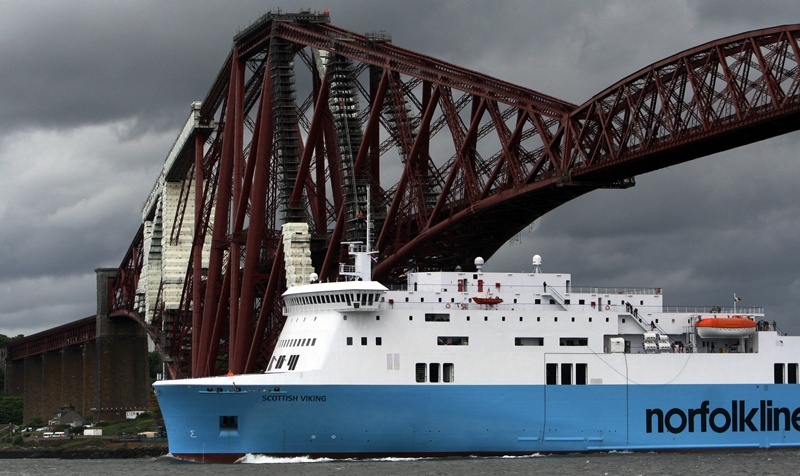Concerns over watchkeeping on both the Rosyth ferry and an English fishing boat have been raised in an accident report into a fatal collision which ended in the death of a teenager.
A Marine Accident Investigation Branch report has found the crews of both vessels had not determined, at an early stage, if there was a risk of collision.
Daniel McNeil (16) from North Shields died after the incident involving the Zeebrugge-bound Rosyth Scottish Viking ferry service and the Homeland fishing vessel off the coast of St Abbs last August.
Now the report into the tragedy has found factors leading to the collision included:
The Scottish Viking’s watchkeeper did not determine at an early stage if there was a risk of a collision with Homeland, did not sufficiently monitor or plot Homeland’s track and once a risk of collision was deemed to exist failed to take sufficient action to avoid it.
Homeland’s watchkeeper also did not determine at an early stage if there was a risk of a collision with the passenger and freight ferry, did not maintain a proper lookout from the wheelhouse and did not recognise a risk of collision with the Scottish Viking until it was too late to take effective action.
The investigation identified other contributory factors.
It found that on the Scottish Viking there was “complacency and lack of precautionary thought” and ineffective implementation of the company’s navigation policy and procedures.
On the Homeland it found there was restricted all round visibility from the aft deck, conflicting task priorities and a possible lack of watchkeeping proficiency.
The report stated the manager of the ferry had taken a number of actions aimed at improving the performance of the teams working on the bridge.
These included reiterating the importance of following the company’s navigational procedures, introducing a process for masters to report on the competence of newly joined officers, carrying out unscheduled navigational audits while at sea and randomly scrutinising data to verify compliance with its procedures.
In view of the actions that have been taken the Marine Accident Investigation Board has issued no safety recommendations.
The Italian registered ferry, carrying 259 passengers and 47 crew members, left its Fife port at 5.20pm on August 5.
Meanwhile, Homeland had left the port of Eyemouth at about 6.45pm that evening accompanied by two other fishing vessels.
It was at 7.46 the two vessels collided.
The collision, which happened in good visibility, resulted in the 11 metre wooden fishing vessel sinking.
The skipper, Daniel’s older brother, was rescued by one of the other boats.
However Daniel was lost at sea.
A full scale search and rescue mission sprang into action.
It involved a search and rescue helicopter and lifeboats from Eyemouth, St Abb’s and Dunbar, Eyemouth all-weather lifeboat and fishing vessels.
The Scottish Viking also assisted in the search.
The search was halted later that night and resumed at first light the following morning, but despite this Daniel’s remains were found only three months later.
The International Chamber of Shipping has distributed a circular to its members highlighting its concerns regarding standards of watchkeeping and the Marine Accident Investigation branch has issued a flyer to the fishing industry to highlight the lessons learned from the incident.
At the time DFDS Seaways chartered the ferry from Italian firm Visentini.
The passenger/freight service was pulled last December and now DFDS runs enhanced freight services on the route.
It no longer has a connection with the Scottish Viking.
Speaking from Denmark Gert Jakobsen, communications manager for DFDS, said the firm had not had time to study the report in full, but he understood there was some criticism of watchkeeping and safety procedures not being followed.
He added, “I also think we have very strict procedures on all our ships but this was not our ship so I am not in position to criticise or comment on the procedure on board that ship as that ship was chartered to run, we did not operate it.”
